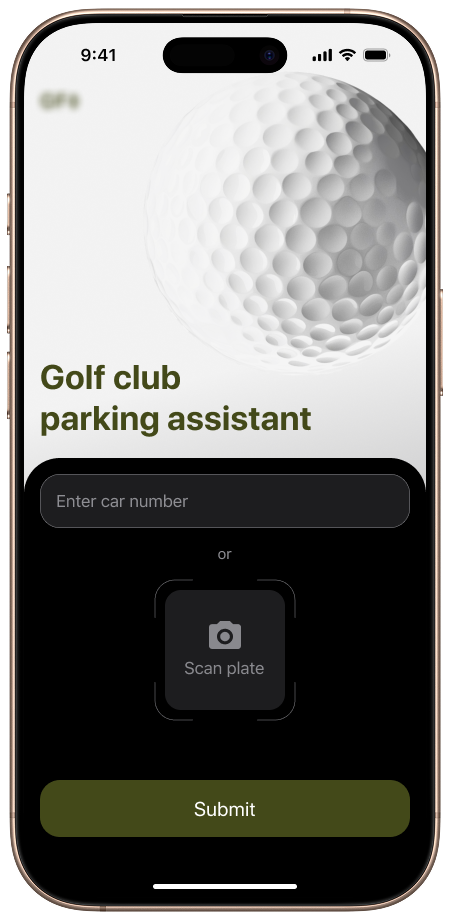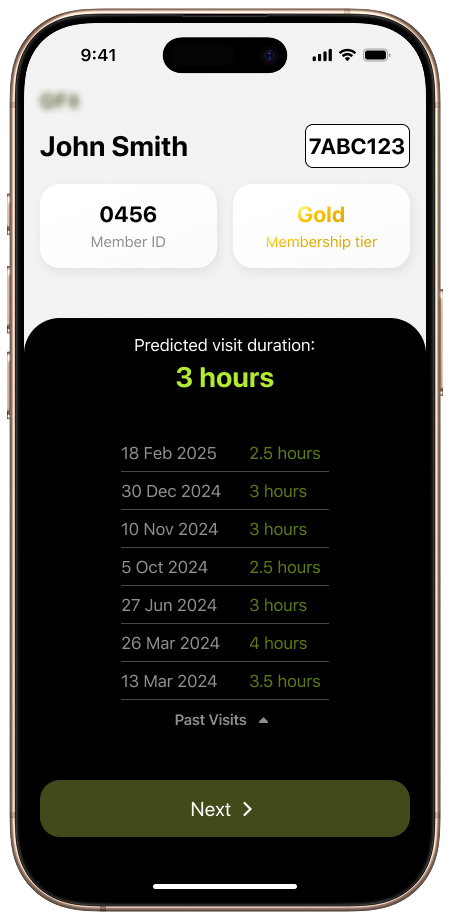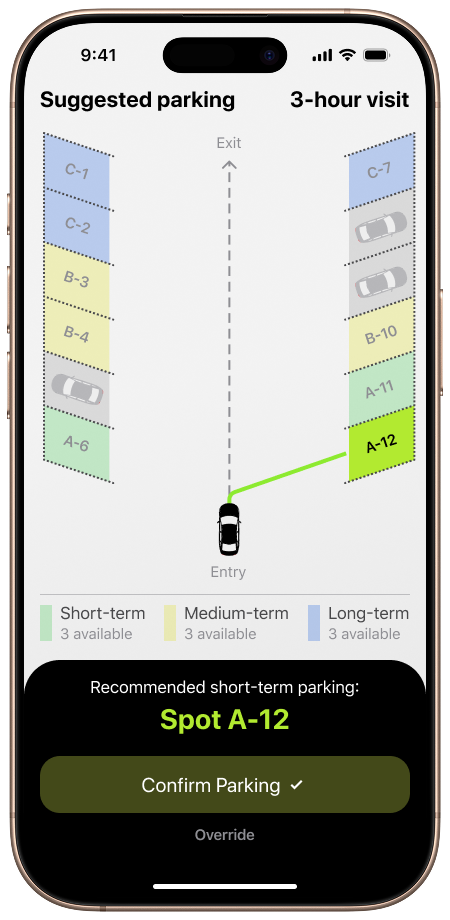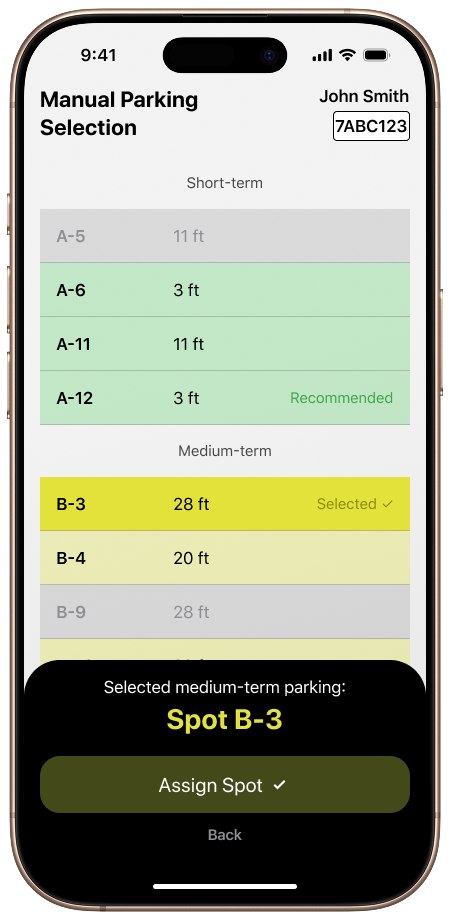AI Parking Management for Golf Clubs
Client Background
A prestigious golf club wanted to modernize its parking system via a mobile app using artificial intelligence. The goal was to get software that could recognize members from their car numbers, predict their stay times based on past visits, and suggest the best parking lots without user registration.
Goals & Requirements
The aim of the golf club was to get parking software that would make car parking more rational and convenient for its members. The main development goals, in turn, were to use minimal resources, quickly deliver the application, and embed the following capabilities:
- Vehicle Number Plate Reading: The app needed to independently recognize club visitors based on their license plates without manual input.
- AI-Assisted Predictions: Using machine learning, the app needed to predict the visiting time (duration) of members despite limited historical details.
- Live Communication: To guarantee adequate parking management, the app needed to send regular updates to the club staff.
- Unified Cross-Device Functionality: The app was also expected to work the same on Android and iOS without extreme OS-specific modifications.
Development Approach & Technology Stack
For the app, we chose React Native because of its cross-device capabilities and thus fast iteration cycle, along with a Node.js backend and MongoDB to manage member and parking data. As far as the development process itself is concerned, we decided to split it into five sub-steps:
- Backend Integration: We connected to an already existing member database through a RESTful API to retrieve car numbers and visit records.
- AI Model Development: Next, we trained a machine learning model to foretell visit times and deployed it with TensorFlow Lite for the offline mode.
- Live Updates: We used WebSocket and Firebase to activate immediate communication between staff devices and the backend.
- Car Number Recognition: Next, our developers embedded OCR technology (via react-native-vision-camera) to scan license plates. We also added the manual entry mode as a backup.
- Staff-Oriented UI: Finally, we made up a simple interface with reusable components of React Native so that the users could easily run the app.
Merits of React Native
React Native became the main constituent in the successful development of the app because it gave some features that were necessary to satisfy the project’s conditions:
- Single Codebase: A unified development strategy lowered development time and cost.
- Fast Development: With hot reloading, we could quickly test changes and tweak the app without restarting it.
- Native Feature Access: We easily connected the app to the device’s camera for scanning car numbers.
Rich Library Support: A large range of ready-to-apply tools made it simple for us to add AI elements and process data.
Solution in Action
When a client arrived at the golf club, the app then:
- Recognized the member and retrieved their profile.
- Applied AI to calculate how long they would stay according to their past visits.
- Suggested the best parking slot taking into account expected visit time and vacant spaces.
- Notified the staff that certain guests might leave within the next 30 minutes, and if there were free parking spaces nearby, it was worth moving the car to them.
For example, if the app predicted a short visit, it suggested a parking spot near the entrance. For longer stays, it recommended parking farther away.
Problems & Resolutions
During the process of creating the application, we encountered some technical problems. Below, we have described these problems and solutions to them so that in the end everything worked as intended:
- The app had trouble reading license plates in poor lighting or when they were damaged. → We added a manual entry option so staff could manually identify cars.
- The AI wasn’t accurate at first because there wasn’t enough data. → We started with simple rules and improved the AI as more data became available.
- Parking updates were too slow, making it hard for staff to manage spaces. → We used WebSockets and Firebase to keep updates instant.
- The app’s interface was getting too complicated, which could slow staff down. → We simplified it with clear parking suggestions and improved it based on staff feedback.
Major Features & Benefits
After adding the main features, the app brought several benefits that made staff work better and improved the experience for club members. Here are the key features and their benefits:
- Car Number Recognition: Staff could easily identify members using OCR or manual entry.
- AI-Powered Visit Prediction: The app helped allocate parking better by predicting how long members would stay.
- Smart Parking Suggestions: Also, new software reduced parking congestion by suggesting the best available spots.
- Cross-Platform Compatibility: The app worked consistently on iOS and Android, reusing 95% of the code.
Live Updates: Staff received instant updates on parking availability.
Results & Impact
At the end of the project, we received the following outcomes:
- We created and deployed the app within three months with only 1 front-end developer (React Native), 1 back-end/AI developer, and 1 UI/UX designer.
- We deployed the app on iOS and Android, achieving 85% accuracy in AI predictions of visit duration. Additionally, we reduced parking allocation time by 50%, and received positive staff feedback, rating the app 4.7/5. We also slashed the overall development expenses by around 40%.
- The app rationalized parking management and improved club member service, as well as left space for future reinforcements, including weather-based adjustments and advanced AI capabilities.
Cases
- .NET
- ASP.NET Core



